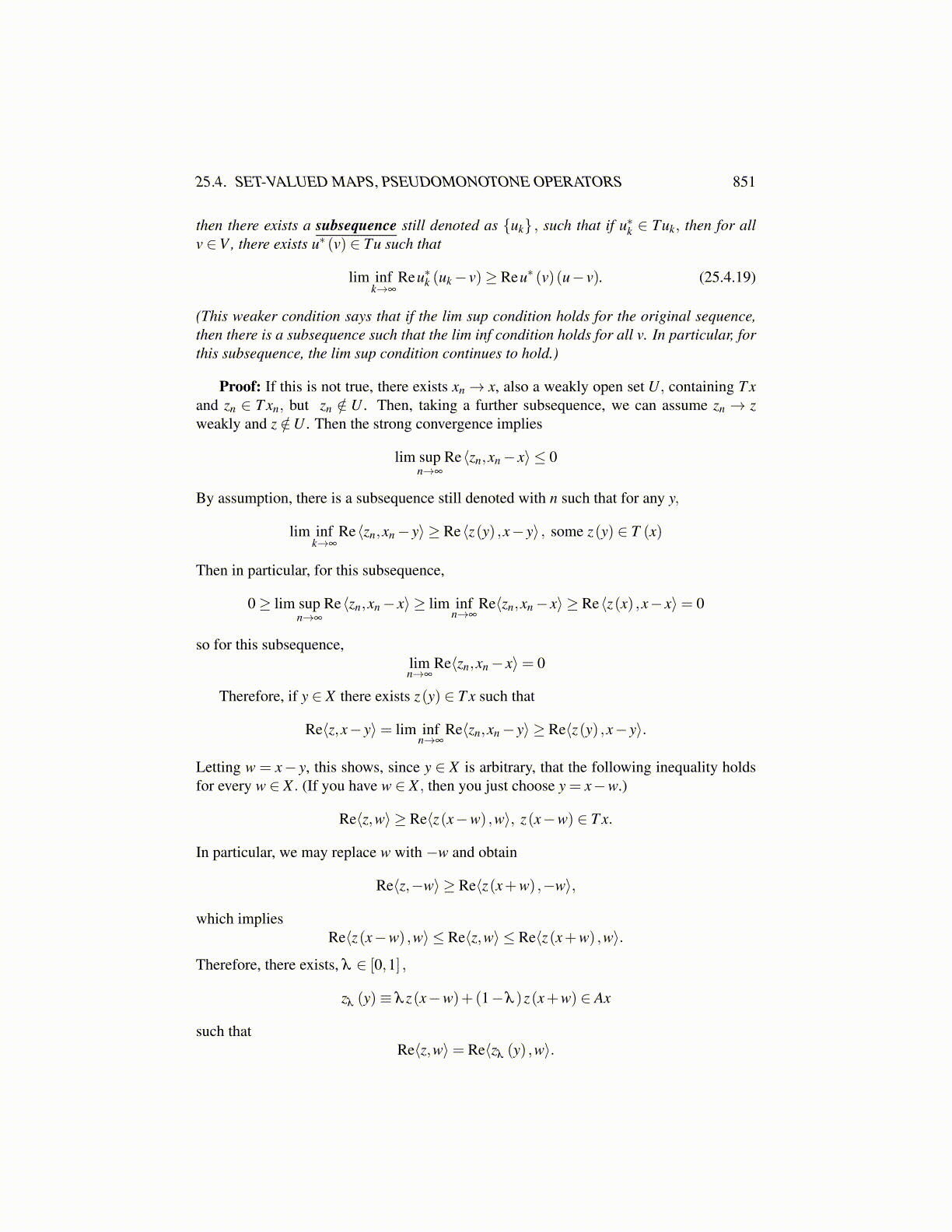
25.4. SET-VALUED MAPS, PSEUDOMONOTONE OPERATORS 851
then there exists a subsequence still denoted as {uk} , such that if u∗k ∈ Tuk, then for allv ∈V , there exists u∗ (v) ∈ Tu such that
lim infk→∞
Reu∗k (uk− v)≥ Reu∗ (v)(u− v). (25.4.19)
(This weaker condition says that if the lim sup condition holds for the original sequence,then there is a subsequence such that the lim inf condition holds for all v. In particular, forthis subsequence, the lim sup condition continues to hold.)
Proof: If this is not true, there exists xn→ x, also a weakly open set U, containing T xand zn ∈ T xn, but zn /∈ U . Then, taking a further subsequence, we can assume zn → zweakly and z /∈U . Then the strong convergence implies
lim supn→∞
Re⟨zn,xn− x⟩ ≤ 0
By assumption, there is a subsequence still denoted with n such that for any y,
lim infk→∞
Re⟨zn,xn− y⟩ ≥ Re⟨z(y) ,x− y⟩ , some z(y) ∈ T (x)
Then in particular, for this subsequence,
0≥ lim supn→∞
Re⟨zn,xn− x⟩ ≥ lim infn→∞
Re⟨zn,xn− x⟩ ≥ Re⟨z(x) ,x− x⟩= 0
so for this subsequence,limn→∞
Re⟨zn,xn− x⟩= 0
Therefore, if y ∈ X there exists z(y) ∈ T x such that
Re⟨z,x− y⟩= lim infn→∞
Re⟨zn,xn− y⟩ ≥ Re⟨z(y) ,x− y⟩.
Letting w = x− y, this shows, since y ∈ X is arbitrary, that the following inequality holdsfor every w ∈ X . (If you have w ∈ X , then you just choose y = x−w.)
Re⟨z,w⟩ ≥ Re⟨z(x−w) ,w⟩, z(x−w) ∈ T x.
In particular, we may replace w with −w and obtain
Re⟨z,−w⟩ ≥ Re⟨z(x+w) ,−w⟩,
which impliesRe⟨z(x−w) ,w⟩ ≤ Re⟨z,w⟩ ≤ Re⟨z(x+w) ,w⟩.
Therefore, there exists, λ ∈ [0,1] ,
zλ (y)≡ λ z(x−w)+(1−λ )z(x+w) ∈ Ax
such thatRe⟨z,w⟩= Re⟨zλ (y) ,w⟩.